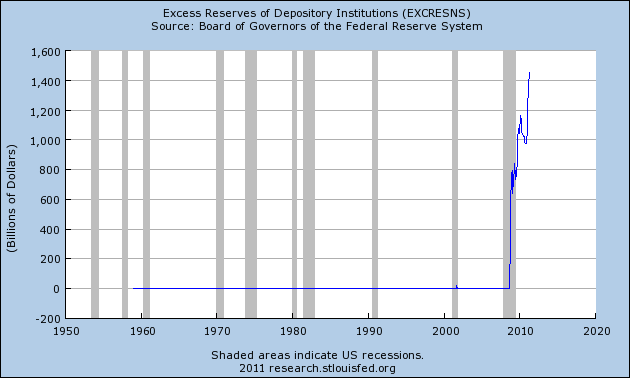50 Things Every American Should Know About The Collapse Of The Economy
 Right now, we are witnessing a truly historic collapse of the economy, and yet most Americans do not understand what is going on. One of the biggest reasons why the American people do not understand what is happening to the economy is because our politicians and the mainstream media are not telling the truth. Barack Obama and Federal Reserve Chairman Ben Bernanke keep repeating the phrase "economic recovery" over and over, and this is really confusing for most Americans because things sure don't seem to be getting much better where they live. There are millions upon millions of Americans that are sitting at home on their couches right now wondering why they lost their jobs and why nobody will hire them. Millions of others are wondering why the only jobs they can get are jobs that a high school student could do. Families all across America are wondering why it seems like their wages never go up but the price of food and the price of gas continue to skyrocket. We are facing some very serious long-term economic problems in this country, and we need to educate the American people about why the collapse of the economy is happening. If the American people don't understand why they are losing their jobs, why they are losing their homes and why they are drowning in debt then they are going to keep on doing all of the same things that they have been doing. They will also keep sending the same idiot politicians back to Washington to represent us. There are some fundamental things about the economy that every American should know. The American people need to be shocked out of their entertainment-induced stupor long enough to understand what is really going on and what needs to be done to solve our nightmarish economic problems. If we do not wake up enough Americans in time, the economic collapse that is coming could tear this nation to shreds.
Right now, we are witnessing a truly historic collapse of the economy, and yet most Americans do not understand what is going on. One of the biggest reasons why the American people do not understand what is happening to the economy is because our politicians and the mainstream media are not telling the truth. Barack Obama and Federal Reserve Chairman Ben Bernanke keep repeating the phrase "economic recovery" over and over, and this is really confusing for most Americans because things sure don't seem to be getting much better where they live. There are millions upon millions of Americans that are sitting at home on their couches right now wondering why they lost their jobs and why nobody will hire them. Millions of others are wondering why the only jobs they can get are jobs that a high school student could do. Families all across America are wondering why it seems like their wages never go up but the price of food and the price of gas continue to skyrocket. We are facing some very serious long-term economic problems in this country, and we need to educate the American people about why the collapse of the economy is happening. If the American people don't understand why they are losing their jobs, why they are losing their homes and why they are drowning in debt then they are going to keep on doing all of the same things that they have been doing. They will also keep sending the same idiot politicians back to Washington to represent us. There are some fundamental things about the economy that every American should know. The American people need to be shocked out of their entertainment-induced stupor long enough to understand what is really going on and what needs to be done to solve our nightmarish economic problems. If we do not wake up enough Americans in time, the economic collapse that is coming could tear this nation to shreds.
The U.S. economy was once the greatest economic machine in modern world history. It was truly a wonder to behold. It worked so well that entire generations of Americans came to believe that America would enjoy boundless prosperity indefinitely.
But sadly, prosperity is not guaranteed for any nation. Over the past several decades, some very alarming long-term economic trends have developed that are absolutely destroying the economy. If dramatic changes are not made soon, a complete and total economic collapse will be unavoidable.
Unfortunately, the American people will never agree to fundamental changes to our economic and financial systems unless they are fully educated about what is causing our problems. We have turned our backs on the principles of our forefathers and the principles of those that founded this nation. We have rejected the ancient wisdom that was handed down to us.
It has been said that those that sow the wind, shall reap the whirlwind.
We are about to experience the consequences of decades of really bad decisions.
Hopefully we can get the American people to wake up.
The following are 50 things that every American should know about the collapse of the economy....
#1 Do you remember how much was made of the "Misery Index" during the presidency of Jimmy Carter? At that time, the "Misery Index" was constantly making headlines in newspapers all across the country. Well, according to John Williams of Shadow Government Statistics, if we calculated unemployment and inflation the same way that we did back during the Carter administration, then the Misery Index today would actually be higher than at any point during the presidency of Jimmy Carter.
#2 According to the U.S. Bureau of Labor Statistics, an average of about 5 million Americans were being hired every single month during 2006. Today, an average of about 3.5 million Americans are being hired every single month.
#3 According to the Wall Street Journal, there are 5.5 million Americans that are currently unemployed and yet are not receiving unemployment benefits.
#4 All over America, state and local governments are selling off buildings just to pay the bills. Investors can now buy up government-owned power plants, prisons and municipal buildings from coast to coast. For example, the mayor of Newark, New Jersey recently sold off 16 government buildings (including the police and fire headquarters) just to pay some bills.
#5 When Americans think of "government debt", most of them only think of the federal government, but it is not just the federal government that has a massive debt problem. State and local government debt has reached an all-time high of 22 percent of U.S. GDP.
#6 If you can believe it, one out of every seven Americans has at least 10 credit cards.
#7 Credit card usage in the United States is on the increase once again. During the month of March, revolving consumer credit jumped 2.9%. Sadly, it looks like Americans have not learned their lessons about the dangers of credit card debt.
#8 Last year, Social Security ran a deficit for the first time since 1983, and the "Social Security deficits" in future years are projected to be absolutely horrific.
#9 The U.S. government now says that the Medicare trust fund will run out five years faster than they were projecting just last year.
#10 Right now we are watching what could potentially be the worst Mississippi River flood ever recorded play out right in front of our eyes. One agricultural economist at Mississippi State University believes that this disaster could do 2 billion dollars of damage just to farms alone.
#11 The "tornadoes of 2011" that we just saw in the southeast United States are being called the worst natural disaster that the U.S. has seen since Hurricane Katrina. It has been estimated that up to 25 percent of all of the poultry houses in Alabama were either significantly damaged or destroyed. It is also believed that millions of birds were killed.
#12 The economic effects of the BP oil spill just seem to go on and on and on. The number of very sick fish in the Gulf of Mexico is really starting to alarm scientists. The following is how one local newspaper recently described the situation....
Scientists are alarmed by the discovery of unusual numbers of fish in the Gulf of Mexico and inland waterways with skin lesions, fin rot, spots, liver blood clots and other health problems.
#13 The number of "low income jobs" in the U.S. has risen steadily over the past 30 years and they now account for 41 percent of all jobs in the United States.
#14 All over America, hospitals that care for the poor and needy are so overwhelmed and are so broke that they are being forced to shut down. Recently, a local newspaper in Florida ran an article about two prominent charity hospitals in Illinois that have served the poor for more than 100 years but are now asking for permission to shut down....
Two charity hospitals in Illinois are facing a life-or-death decision. There's not much left of either of them - one in Chicago's south suburbs, the other in impoverished East St. Louis - aside from emergency rooms crowded with patients seeking free care. Now they would like the state's permission to shut down.
#15 The U.S. dollar is in such bad shape that now even Steve Forbes is predicting that the U.S. is "likely" to go back to a gold standard within the next five years.
#16 Most Americans don't realize how much the U.S. dollar has been devalued over the years. An item that cost $20.00 in 1970 would cost you $115.93 today. An item that cost $20.00 in 1913 would cost you $454.36 today.
#17 Over the past 12 months the average price of gasoline in the United States has gone up by about 30%.
#18 U.S. oil companies will bring in about $200 billion in pre-tax profits this year. They will also receive about $4.4 billion in specialized tax breaks from the U.S. government.
#19 It is being projected that for the first time ever, the OPEC nations are going to bring in over a trillion dollars from exporting oil this year. Their biggest customer is the United States.
#20 According to the Pentagon, there are minerals worth over a trillion dollars under the ground in Afghanistan. Now, J.P. Morgan is starting to tap those riches with the help of the U.S. military.
#21 Speaking of J.P. Morgan, most Americans don't realize that they are actually the largest processor of food stamp benefits in the United States. In fact, the more Americans that go on food stamps the more money that J.P. Morgan makes.
#22 When 2007 began, there were about 26 million Americans on food stamps. Today, there are over 44 million on food stamps, and one out of every four American children is on food stamps.
#23 Back in 1965, only one out of every 50 Americans was on Medicaid. Today, one out of every 6 Americans is on Medicaid.
#24 Only 66.8% of American men had a job last year. That was the lowest level that has ever been recorded in all of U.S. history.
#25 The financial system is more vulnerable today than it was back in 2008 before the financial panic. Today, the world financial system has been turned into a giant financial casino where bets are made on just about anything you can possibly imagine, and the major Wall Street banks make a ton of money from this betting system. The system is largely unregulated (the new "Wall Street reform" law has only changed this slightly) and it is totally dominated by the big international banks. The danger from derivatives is so great that Warren Buffet once called them "financial weapons of mass destruction". It is estimated that the "derivatives bubble" is somewhere in the neighborhood of a quadrillion dollars, and once it pops there isn't going to be enough money in the entire world to bail everyone out.
#26 Between December 2000 and December 2010, the United States ran a total trade deficit of 6.1 trillion dollars with the rest of the world, and the U.S. has had a negative trade balance every single year since 1976.
#27 The United States has lost an average of 50,000 manufacturing jobs per month since China joined the World Trade Organization in 2001, and the U.S. trade deficit with China is now 27 times larger than it was back in 1990.
#28 In 2010, the number one U.S. export to China was "scrap and trash".
#29 All over the United States, many of our once great manufacturing cities are being transformed into hellholes. In the city of Detroit today, there are over 33,000 abandoned houses, 70 schools are being permanently closed down, the mayor wants to bulldoze one-fourth of the city and you can literally buy a house for one dollar in the worst areas.
#30 During the first three months of this year, less new homes were sold in the U.S. than in any three month period ever recorded.
#31 New home sales in the United States are now down 80% from the peak in July 2005.
#32 America's real estate crisis just seems to get worse and worse. U.S. home prices have now fallen a whopping 33% from where they were at during the peak of the housing bubble.
#33 According to a new report from the AFL-CIO, the average CEO made 343 times more money than the average American did last year.
#34 The European debt crisis could cause a global financial collapse like the one that we saw in 2008 at any time. The world economy is incredibly interconnected today, and the United States would not be immune. A recent IMF report stated the following about the growing sovereign debt crisis in Europe....
Strong policy responses have successfully contained the sovereign debt and financial-sector troubles in the euro area periphery so far. But contagion to the core euro area and then onward to emerging Europe remains a tangible risk.
#35 According to one study, the 50 U.S. state governments are collectively 3.2 trillion dollars short of what they need to meet their pension obligations.
#36 A different study has shown that individual Americans are $6.6 trillion short of what they need to retire comfortably.
#37 The cost of college tuition in the United States has gone up by over 900 percent since 1978.
#38 According to the Bureau of Economic Analysis, health care costs accounted for just 9.5% of all personal consumption back in 1980. Today they account for approximately 16.3%.
#39 One study found that approximately 41 percent of working age Americans either have medical bill problems or are currently paying off medical debt.
#40 The combined debt of the major GSEs (Fannie Mae, Freddie Mac and Sallie Mae) has increased from 3.2 trillion in 2008 to 6.4 trillion in 2011. Thanks to our politicians, U.S. taxpayers are standing behind that debt.
#41 The U.S. government is over 14 trillion dollars in debt and the budget deficit for this year is projected to be about 1.5 trillion dollars. However, if the U.S. government was forced to use GAAP accounting principles (like all publicly-traded corporations must), the U.S. government budget deficit would be somewhere in the neighborhood of $4 trillion to $5 trillion each and every year.
#42 Most Americans don't understand that the Federal Reserve and the debt-based monetary system that it runs are at the very heart of our economic problems. All of this debt is absolutely crushing us. The U.S. government spent over 413 billion dollars on interest on the national debt during fiscal 2010, and it is being projected that the U.S. government will be shelling out 900 billion dollars just in interest on the national debt by the year 2019.
#43 Standard & Poor’s has altered its outlook on U.S. government debt from "stable" to "negative" and is warning that the U.S. could soon lose its AAA rating.
#44 In 1980, government transfer payments accounted for just 11.7% of all income. Today, government transfer payments account for 18.4% of all income.
#45 U.S. households are now receiving more income from the U.S. government than they are paying to the government in taxes.
#46 59 percent of all Americans now receive money from the federal government in one form or another.
#47 According to Gallup, 41 percent of Americans believed that the economy was "getting better" at this time last year. Today, that number is at just 27 percent.
#48 The wealthiest 1% of all Americans now own more than a third of all the wealth in the United States.
#49 The poorest 50% of all Americans collectively own just 2.5% of all the wealth in the United States.
#50 The percentage of millionaires in Congress is more than 50 times higher than the percentage of millionaires in the general population.
http://theeconomiccollapseblog.com/




